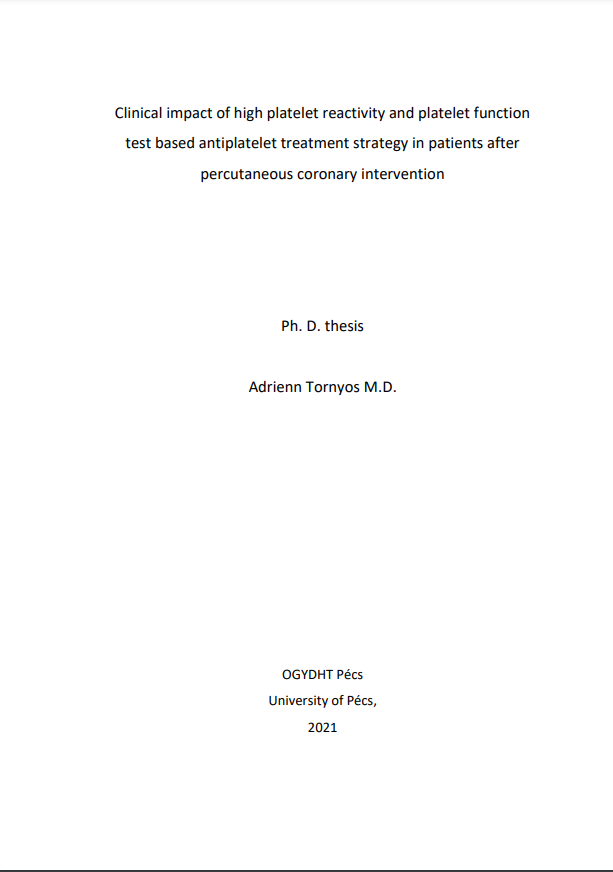Clinical impact of high platelet reactivity and platelet function test based antiplatelet treatment strategy in patients after percutaneous coronary intervention
Abstract
The long-term success of myocardial revascularisation requires the optimisation of
pharmacological and interventional treatment protocols which consider both the
thrombotic and bleeding complications. However, the treatment based on the current
therapeutic recommendations still fails to fully eliminate these adverse events after
percutaneous coronary intervention (PCI). The short – and long-term results of PCI are
multifactorial and depend on the clinical setting (chronic coronary syndrome or acute
coronary syndrome), the complexity of the coronary disease, the operator experience,
the patient status and comorbidities. The most important ischemic complications after
PCI include recurrent ischemia due to the thrombosis of the previously stented segment
or the overproliferation of the intimal layer of the treated vessel which leads to
thickened neointima and reduced vessel lumen.

